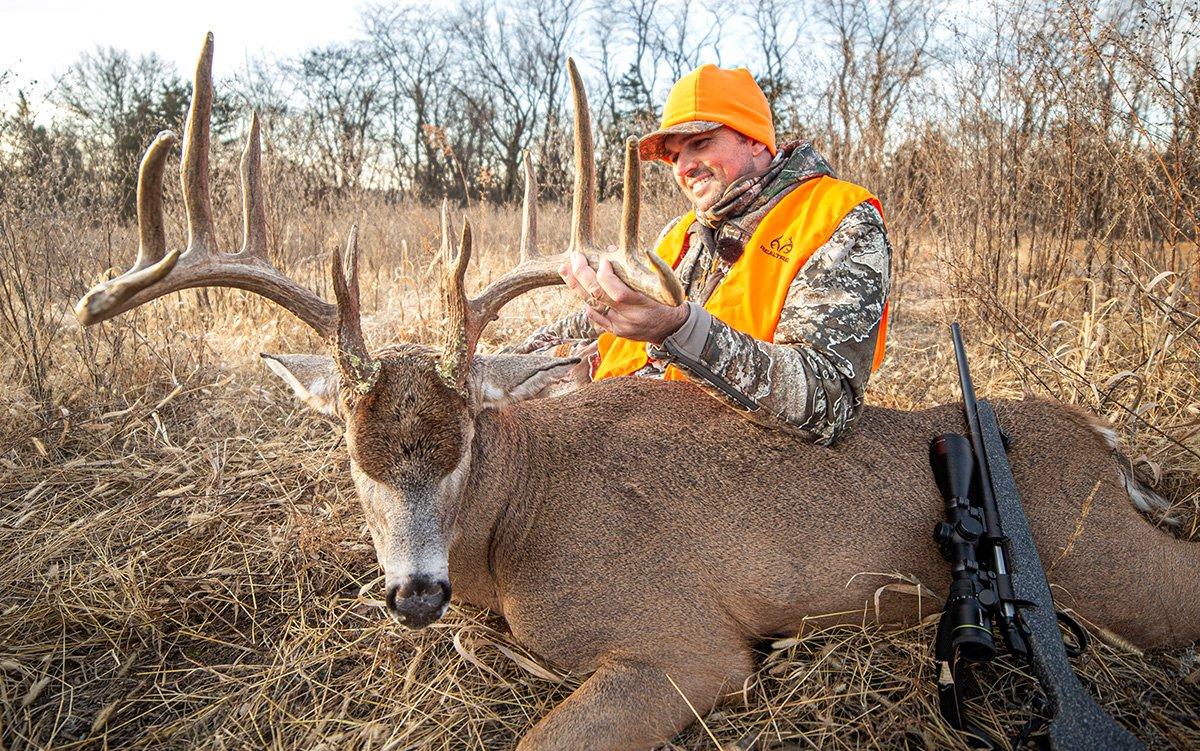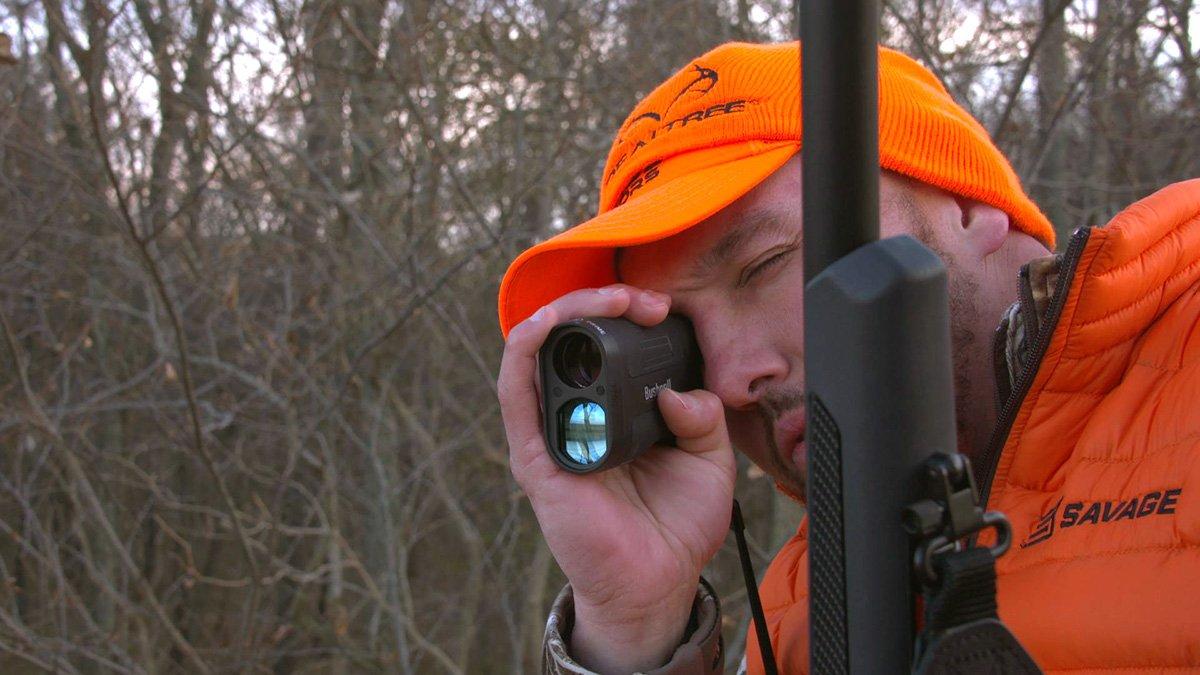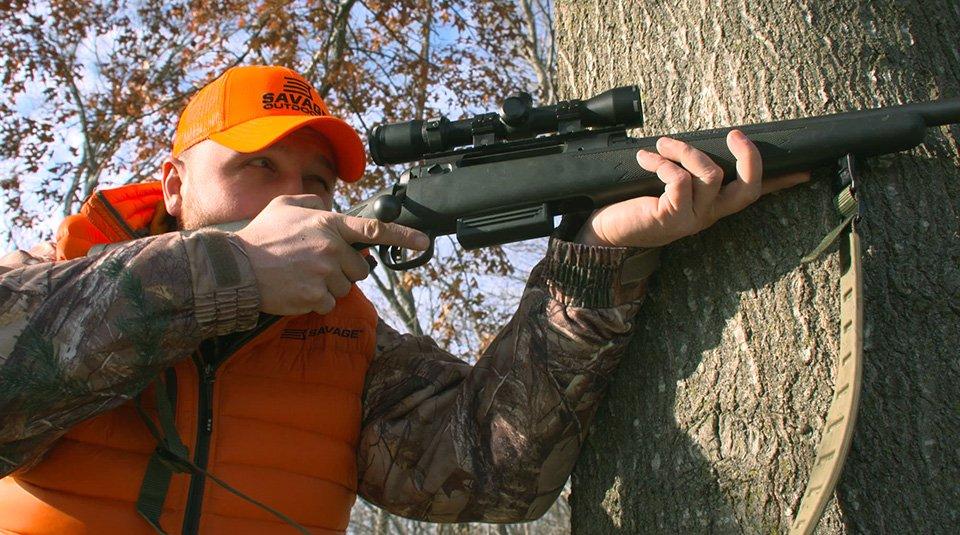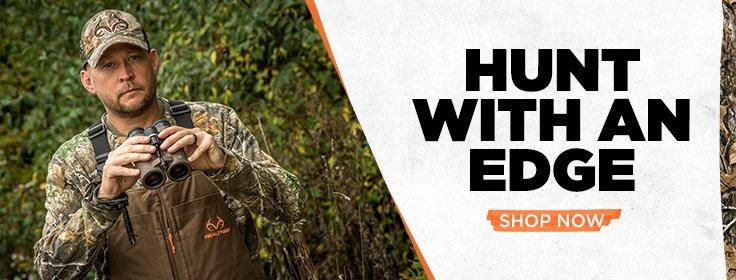You'll be lucky to fire a single bullet at a big buck in 2020. Be sure to make it perfect
One morning in the Clearwater Mountains of Idaho, I watched two whitetail bucks skirting a hillside trail across a canyon.
Two hundred sixty yards, my friend Bob said from below his rangefinder. Buck in back is bigger.
I rested my .270 in the crotch of sticks and watched as the deer ducked in and out of thick brush, popping in and out of my riflescope, quartering away pretty hard. Tricky. When the big one stopped for a second in an open hole in the willows, Bob whispered, Now.
I aimed the crosshair on the animal's right shoulder, slid it back a foot, pinned the duplex on the last rib in front of the deer's hindquarter, and squeezed the trigger.
My first Idaho whitetail, a fat 8-pointer with tines white as bleached bone, slammed down into the hill and never moved.
When a deer is quartering away from you, aim for the heart/lung vitals behind the shoulder you can see, then slide the scope's crosshair back, pin it on the ribs, and press the trigger. The harder a buck is quartering away, the farther back you aim on the rib cage — 6 inches to 8 inches to even a foot.
(Want to shoot tighter groups? Check out 21 Riflescope Tips for Hunters.)
The physics is for the bullet to punch through the deer's ribs, angle forward through the lungs/heart, and either lodge in the opposite-side shoulder or exit it. Since a pill has to travel a good way through an animal and do hard work as it goes, you'll do well to use a premium hunting bullet, like the Barnes TSX or Scirocco bonded, two of my favorites.
The lucky among us will fire one bullet at a big, mature buck in the coming weeks. Here are 14 more tips to make one shot count.
2. One time in a magazine I wrote that in a tense hunting situation, with a split second to get over the jitters and ready a rifle and kill a big buck, most people couldn't hit an elephant in the a** past 200 yards. A good number of macho guys told me to stick it — they can kill deer all day long at 300 or 400 yards — but most hunters reluctantly agreed that I was right. Try to set up stands or stalk for rifle shots 200 yards and in (the closer the better) and you'll do fine. Of course, you might have to push a shot to 250 or farther on occasion.
3. Think out a shot before it happens. Say you're stalking on a ridge: What if a buck jumps out of that draw? Which way will he run? Is it 150 or 200 yards across that canyon? Stay sharp and try to foresee a quick shot as best you can.
4. One October day I crawled up on a buck browsing in the shade, zapped him at 152 yards with my rangefinder, flipped down the legs of my rifle's bipod, aimed for 10 seconds, and pressed the 7mm RUM's trigger. It was like shooting that deer off a bench rest. Use a flip-down bipod that attaches to your rifle in big, short-grass country where you have time to go prone and set up a shot. There is no better rest. When still-hunting in timber or taller cover where a buck might pop up quickly, the side of a tree or a monopod is a better option.
5. Hunters blow untold numbers of shot opportunities by fiddling around with a rest as a buck gets away. At home before the hunt, practice flipping, extending, and locking the legs of a new bipod or sticks, until you can set up and be ready for a one-kill shot in seconds.
(Check out: 7 Expert Big Game Hunting Tips from the Pros)
6. You'll shoot better with a rest in a treestand, too. An adjustable, flip-down gun bar that attaches to a stand is best. Otherwise, I use a 3-foot monopod in a stand, or cut an old-school forked stick, rope it up, and use it for a rifle rest for a sitting shot at a buck out front. Here's a trick: I also put a screw-in step on either side of the tree I'm in, 5 feet or so above the stand's platform. If a buck angles in from either side or behind, as many do, I stand and turn slowly back and to the right or left, rest my gun on the step, and take him.
7. In the mental chaos of trying to shoot a bull-thick 10-pointer, who can remember some fancy wind-doping equation? Lex Webernick, who builds fine custom rifles and kills deer with them at long ranges on the Texas plains, puts it in hunters' terms: If the wind's blowing 5 or 10 mph, hold dead on a buck. But if you're having trouble keeping on your cap, use your gut instinct and hold into the wind on shots past 150 yards. Example: A buck is broadside, looking west into a stout west wind. You're set up 200 yards away to the south. Aim on the forward point of his left shoulder, still on hair, and let the wind push that bullet back into his boiler room.
8. Two tips from the U.S. Army Special Forces sniper-training regime will help you register more one-shot kills. Just before the shot, take a couple of deep breaths to oxygenate your blood, exhale normally, then, on a half-breath, break your shot — that's when your body is calmest. After firing, pause and hold for a second and follow through by continuing to look through your scope.
9. A popular saying with old-time gun writers was Accuracy follows consistency. Be consistent in everything, from how you shoulder and cheek the rifle, to how you sight through the scope, to how you breathe as you trip the trigger. Do it all the same every time you line up to shoot a buck.
10. Many hunters go to the range a few weeks (or days) before the season, fire some shots from the bench to check their rifle's zero, and call it good. But you need more training for consistent one-shot kills. A good and affordable way to practice is with a scoped rimfire rifle that approximates the weight and feel of your deer rifle. Grab a brick of .22 LR ammo and set targets 50 yards away. Once or twice a month, plink dozens to hundreds of rounds from the sitting, standing, kneeling, and prone positions. With the .22 there's no recoil, so practice as much as you can.
11. One time out in the Red Hills of western Oklahoma, I scooted up a ridge, set down my shooting stick and fired at an 8-pointer 140 yards away. Shot over him! squealed my friend Scott as we watched the buck walk nonchalantly away. To this day I cringe and remember why I blew it. The ridge was steep and rocky, and I was forced to set up on a rough downhill slope. I contorted and scrunched down, rifle barrel wobbling all around. I rushed it and shot before I was ready, and that is one of the main reasons we screw up. Once in a blue moon after a miss, a disoriented buck will turn and walk straight back to you, like that Oklahoma buck did that day. Count your blessings, lock in, breathe, and take him with a second perfect bullet.
12. I have hunted with dozens of different rifles over the years, with triggers that break from 6 pounds or more down to 2 pounds. I have shot the best and killed the most game with rifles with 4-pound triggers — a pull that is heavy enough to be safe in hunting conditions, but light enough to squeeze and snap for good accuracy. Have a gunsmith test your rifle's trigger weight and adjust it to 4 crisp pounds or so, and you'll shoot better at the range and at deer, I guarantee it.
13. If a buck is walking toward you, quartering slightly on, aim the crosshair onto the point of the shoulder you can see. Hit a deer squarely on the midpoint of the shoulder with a stout bullet that drives back through the vitals, and the animal almost always thumps straight down.
(Tagged out? Make sausage. How to Find the Best Meat Grinder for You.)
14. When is the last time you shot underneath a buck? By far most misses are high, says Wyoming outfitter Brian Beisher. He notes that most hunters, especially those from back East that come West for mule deer, instinctively aim too high, even when a buck is only 120 to 200 yards away. Beisher tells his hunters to calm down and aim for the heart, aim for the heart. It helps them pull their shots low into a deer's chest.
15. Old advice is still good advice: Once you've decided to shoot a buck, don't look at that big pretty rack again. Take a deep inhale, focus on a patch of brown hide low behind his shoulder, pin the scope's crosshair there, and take him with one perfect bullet.










